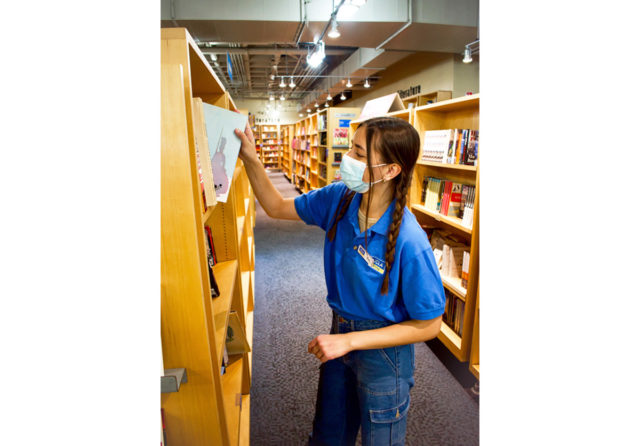After a year of online school, students are eager to return to campus this fall. But the reality for many students is that the cost of higher education remains out of reach for those who struggled before – and because of – the COVID-19 pandemic.
According to a 2020 report by the University of California Board of Regents’ Special Committee on Basic Needs, 39% of UC undergraduate students said they were food insecure during their time as a UC student. The report added that 5% of UC undergraduates said they were homeless during their enrollment at a UC.
Rashida Crutchfield, an associate professor in the School of Social Work at California State University, Long Beach, said society stigmatizes accessing social services and that marginalized communities have been taught they are weak for using these support systems.
“There is this hesitancy to reach out, even when you need it,” Crutchfield said. “I hear students telling me horrific stories about how hard they’re struggling, but then they’ll add, ‘But you know, I can make it.’”
COVID-19 has made it very difficult financially, said Jereme Calhoun, the California director of the Student Navigator Network at Rise. He added that many people asking for help now would not have needed it before the pandemic.
Rise is a national organization and the creator of the Student Navigator Network, through which students can receive case management and one-on-one assistance for basic needs, according to the Rise website.
Calhoun added that some agencies in Los Angeles connect students directly to housing resources. Covenant House, he said, links students to housing services and transitional housing, and the Hollywood LGBT Center has a housing coordinator to support students.
At the federal level, students can receive support and opportunities through programs such as CalFresh and work-study.
Work-study programs award students with financial aid of about $1,000 to $2,000 throughout the school year and the summer, according to the UCLA Financial Aid and Scholarships website. The work-study award pays for part of students’ salaries, which encourages employers to hire them in the first place.
UCLA also offers the work-study program to international and Deferred Action for Childhood Arrivals recipient students in financial need.
Katherine Sharp, a third-year education and social transformation and psychology student and work-study student for the White Lab at UCLA, would advise students to prepare a general resume and cover letter in which department names can be switched out. They recommended to begin looking before the start of the quarter and to send out three applications a day.
Sharp said students can also approach professors whose labs they volunteer for to seek out paid work-study positions.
Charlie Grenier, a fourth-year psychology student and a work-study peer counselor, said she recommends trying to get a work-study position in the field relevant to one’s interest. She added that the work-study job board on the myUCLA website has filters students can use to find certain positions and additional information on what each job entails.
When it comes to balancing school and work, Grenier said work-study supervisors are typically understanding and flexible about scheduling around classes.
UCLA’s work-study guide states that work-study students can work at most 20 hours a week and can only hold one work-study position at a time. In addition, all work-study earnings do not count against a student’s financial aid eligibility when submitting a FAFSA application.
Sharp said most students can work past their maximum work-study award for the quarter. For example, if a student is allocated $2,000 a quarter for work study, they can still make more than that amount and the difference will be reported on their FAFSA application, they added.
Another resource is CalFresh, a program that provides monthly food benefits to qualifying individuals so they can buy nutritious food according to the California Department of Social Services website. It can be used at any grocery store or farmer’s market that accepts it, the website states.
When applying for CalFresh, an individual must provide information on their income, living expenses, citizenship and work status. Most qualifying individuals receive up to $200 each month to go toward food expenses, according to the CDSS.
Russell Castro, an administrative coordinator and assistant to the director at the UCLA Community Programs Office said in an emailed statement that many believe CalFresh eligibility excludes certain student populations, such as those who receive financial aid. In reality, he said, CalFresh is not based strictly on income and both unemployed students and financial aid recipients qualify for benefits.
Castro added that the UCLA CalFresh Initiative offers in-person and virtual office hours to assist students with the application process.
In addition, students will be able to use CalFresh benefits at ASUCLA eateries beginning this fall because of ASUCLA receiving additional funding through the UCLA Basic Needs Committee, Castro said.
It is up to universities and colleges to continue marketing their basic needs services and reaching out to students, Crutchfield said. She added that going to basic needs programs must be as normalized as going to the financial aid office.
“We need to reach out to those students and say, ‘We see you and we are glad that you’re here. And as a part of making sure that you stay, these services are available to you,’” she said.

